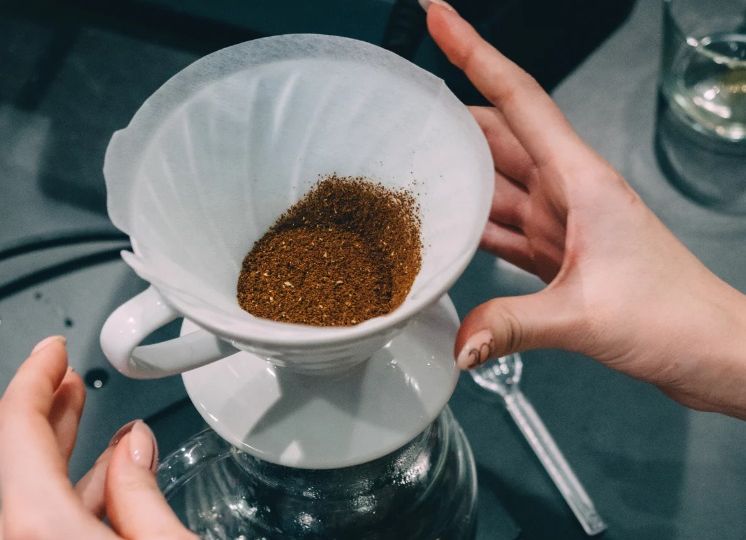
Ever wondered if the number of coffee filters you use could make or break your morning brew? It might seem like a small detail, but the right amount of filters is key to achieving that perfect cup of coffee. It’s not just about preventing grounds from slipping into your drink; it’s about extraction, flavor, and strength. Whether you’re a seasoned coffee aficionado or just someone looking to improve your coffee game, understanding the role of coffee filters is essential. Let’s dive into why this seemingly minor choice can have a big impact on your daily java.
Key Takeaways
- Optimal Flavor and Aroma: Typically, one coffee filter is the way to go to capture the essence of your coffee—offering a balance of flavors and aromas. Yet, depending on your taste or specific brew method, you might find reasons to tweak this number.
- Impact of Filter Types: The variety of filters available—be it paper, metal, cloth, or others—plays a significant role in the outcome of your coffee. Each type interacts differently with oils and sediments, influencing taste and environmental footprints.
- Exploration and Alternatives: Don’t shy away from experimenting with different filters or even considering filter alternatives. Each brewing journey is unique, and discovering new methods can significantly enhance your coffee experience.
Understanding Coffee Filter Types
Paper Filters: Paper filters are the most common choice, celebrated for their convenience and capability to produce a clean cup of coffee by effectively trapping oils and fine grounds. However, some argue that this might also strip away some flavors and aromas. There’s also the consideration of environmental impact, with options ranging from bleached to more eco-friendly unbleached varieties.
Metal Filters: Stainless steel or other metal filters are durable and allow more oils to pass through, which can result in a richer and fuller-bodied coffee. They’re reusable, making them a more environmentally friendly option than their paper counterparts. However, they might let through more sediment, which could be a downside for those who prefer a grit-free cup.
Gold Filters: Gold-tone filters are praised for their long-lasting use and their ability to enhance the coffee’s flavor by allowing more oils to flow into the brew. They do not impart additional tastes to the coffee and maintain the integrity of the coffee’s natural flavors.
Cloth Filters: Cloth filters combine the best of both worlds, allowing more oils than paper filters but less sediment than metal ones. They’re reusable and offer a medium-bodied coffee with a rich aroma. The maintenance of cloth filters is higher, though, as they need to be cleaned thoroughly after each use.
Plastic Filters: Less common are plastic filters, which are typically built into some coffee machines. They don’t absorb oils or flavors and are easy to clean, but their longevity and potential health concerns are often points of debate among users.
The Optimal Number of Filters to Use
When it comes to brewing coffee, the general consensus leans towards simplicity: one coffee filter is typically all you need. This standard practice is not without reason. Using a single filter helps achieve a balance between extraction and flow, ensuring your coffee is flavorful without being over-extracted or bitter. But what happens if you stray from this norm?
Doubling up on filters might seem like a good idea for those seeking a stronger brew, but it often leads to unintended consequences. Over-extraction is a common pitfall, resulting in coffee that’s not just stronger but unpleasantly bitter, as the prolonged water contact pulls out more than just the desired flavors.
Moreover, using more than one filter can physically strain your coffee machine. The added barrier slows down the drip process, increasing the risk of clogs or even damage to the machine. In essence, while experimenting is a part of finding your perfect cup, sticking to one filter is a rule of thumb for good reason.
How Filter Choice Affects Coffee Taste
The debate around coffee filters often circles back to one key issue: taste. Chemically treated paper filters, while convenient and widely used, come with their own set of drawbacks. The treatment process can leave residues that subtly alter the flavor of your coffee, sometimes adding a hint of taste that wasn’t intended. This has led many to seek alternatives that don’t compromise the purity of their brew.
Unbleached or oxygen-bleached paper filters present a solution, offering a more natural approach without the unwanted chemical aftertaste. They allow the true flavors of the coffee to shine through, providing a clean, unadulterated taste.
Permanent filters, made from materials like stainless steel or gold, go a step further by letting more of the coffee’s natural oils into the cup, enriching the flavor profile without adding waste to the environment. These reusable options not only enhance the taste but also contribute to a more sustainable brewing practice.
Reusing Coffee Filters: Yes or No?
Is reusing coffee filters a no-go or a savvy coffee hack? Well, it depends on the filter. Paper filters are generally designed for one-time use; attempting to reuse them can degrade their quality, leading to a subpar brew or even tearing. However, if you’re in a pinch, giving them a gentle rinse and air-dry might work for a second use, though it’s not ideal.
Permanent filters, on the other hand, are built for reuse. Whether they’re made from metal, cloth, or a durable type of plastic, these filters can be cleaned and used again and again. Washing them properly after each use is crucial to prevent oil buildup and maintain the quality of your coffee. So, for those considering the environmental impact and cost over time, permanent filters are a clear winner.
FAQs
Does the filter type really affect coffee taste? Absolutely! Paper filters tend to remove more oils, resulting in a cleaner, lighter taste. Metal and cloth filters allow more oils through, offering a richer flavor profile.
Can all coffee filters be reused? No, paper filters are designed for single use, while metal and cloth filters are meant to be reused, given proper cleaning.
Are there alternatives if I run out of coffee filters? Yes, in a bind, you can use a clean cloth or even a paper towel as a makeshift filter. Just remember, these are temporary solutions and might alter the taste of your coffee.
Final Thoughts
Choosing the right coffee filter and understanding its impact on your brew can be a small but significant step towards perfecting your coffee routine. Whether you prioritize convenience, flavor, or sustainability, there’s a filter type that matches your brewing style. Remember, experimenting with different filters can be a fun and enlightening process, leading you to discover just what makes your cup of coffee uniquely satisfying.









